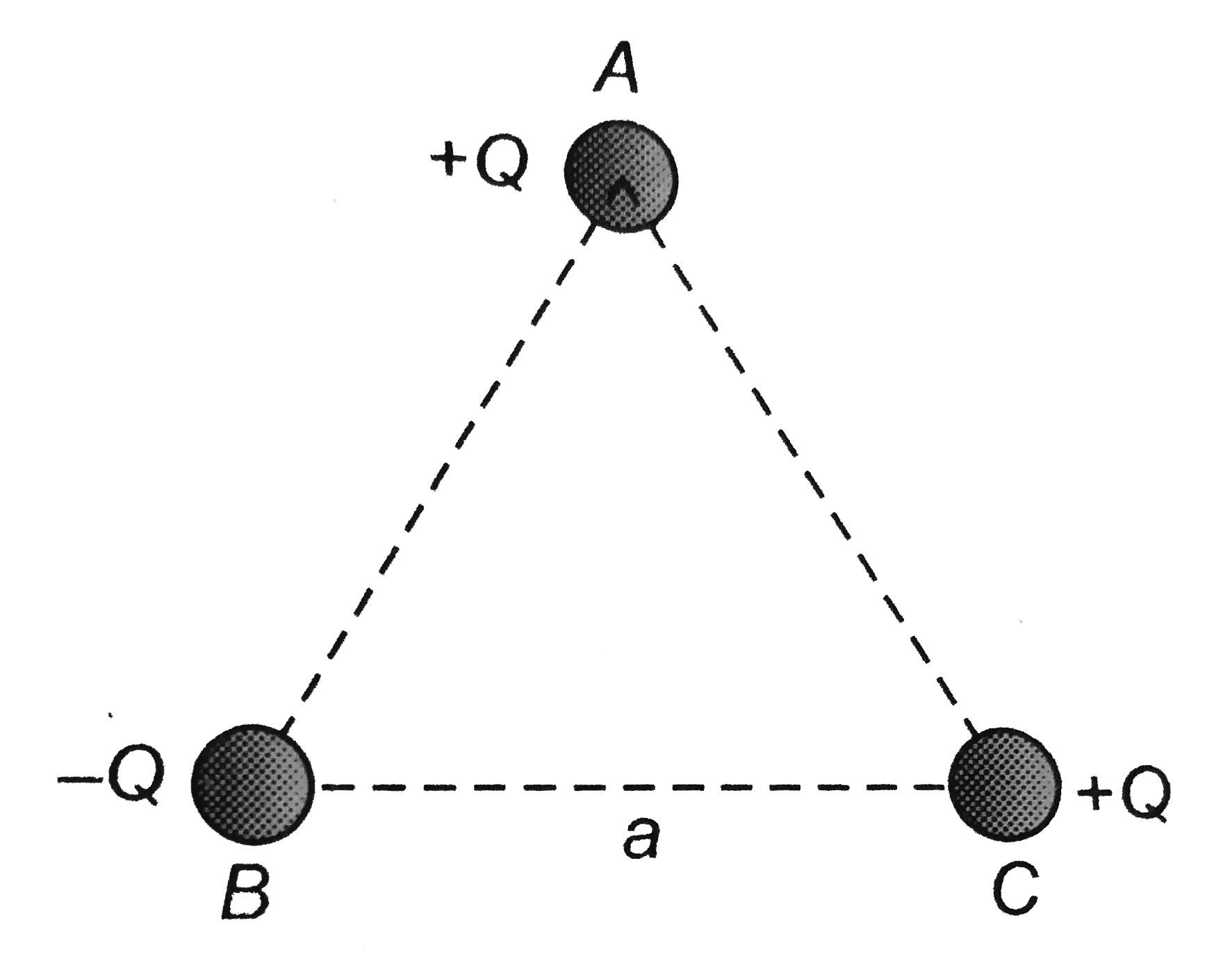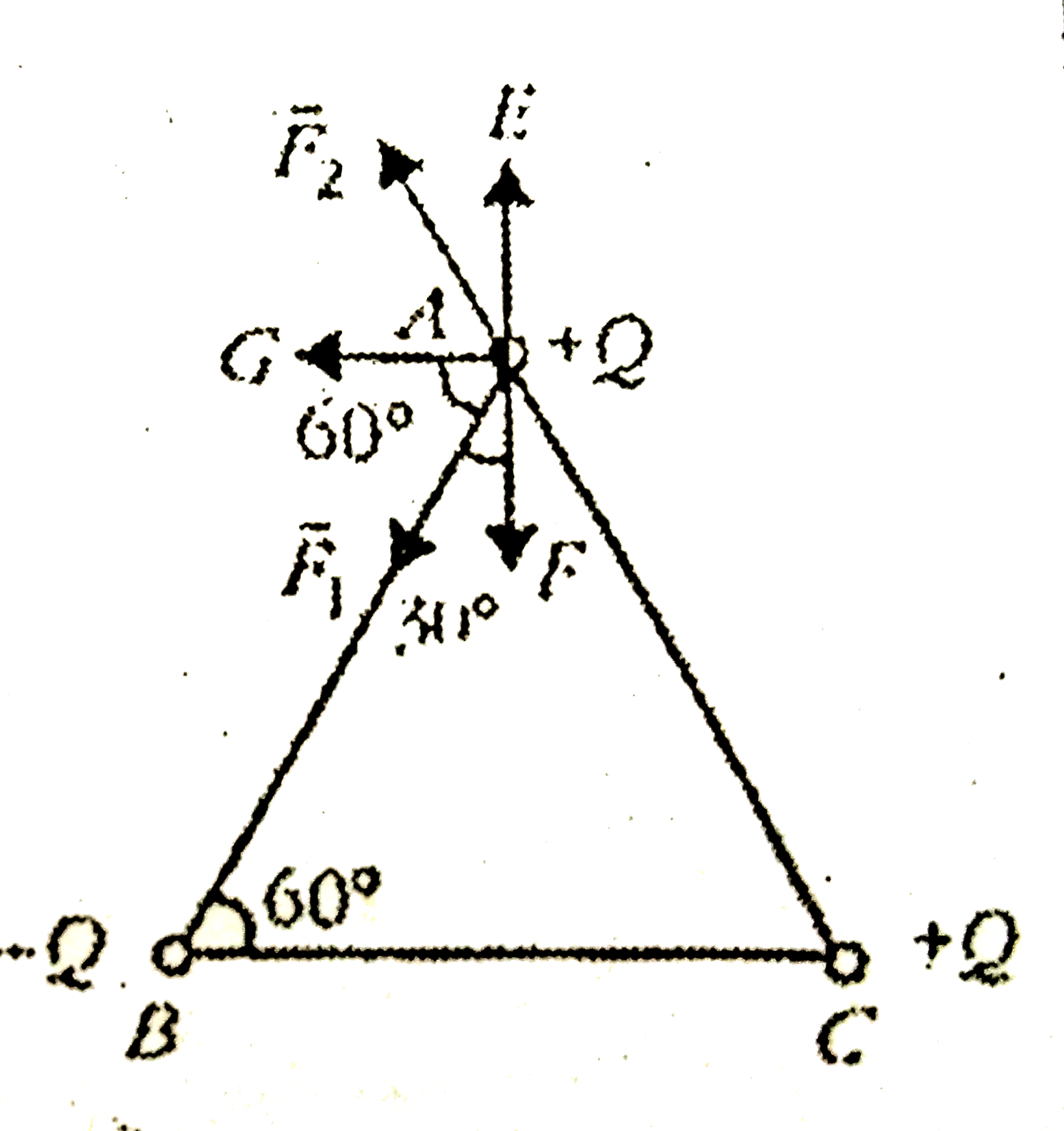Three charges are placed at the vertices of an equilateral trianlge of side a as shown in the following figure. The force experienced by the charge placed at the vertex A in a direction normal to BC is

The correct Answer is:C
The force experienced by A due to B is
F1=14πε0QQa2 along ¯¯¯¯¯¯AB (attractive)
The force experienced by A due to C is
F2=14πε0Q2a2 along ¯¯¯¯¯¯CA produced (repulsive)
Now the force →F1 is having a component F1cos30∘ along and the force →F2 is having a component F2cos30∘ along ¯¯¯¯¯¯AE.¯¯¯¯¯¯AE and ¯¯¯¯¯¯AF are both normal to ¯¯¯¯¯¯BC but they are mutually opposite to each other. And as ∣∣→F1∣∣=∣∣→F2∣∣, so the forces along ¯¯¯¯¯¯AE and ¯¯¯¯¯¯AF will both cancel each other. And so the force experienced by the charge at A in the direction normal to ¯¯¯¯¯¯BC is zero .

Topper's Solved these Questions
Similar Questions
Knowledge Check
Three charges are placed at the vertices of an equilateral trianlge of side a as shown in the following figure. The force experienced by the charge placed at the vertex A in a direction normal to BC is
 AQ24πε0a2B−Q24πε0a2CzeroDQ22πε0a2
AQ24πε0a2B−Q24πε0a2CzeroDQ22πε0a2three points charges are placed at the cornors of an equilibrium triangle of side L as shown in the figure
 Athe potential at the centroid of the triangle is zero.BThe electric field at the centroid of the triangle is zeroCThe dipole moment of the system is √2qLDThe dipoe moment of the system is √3qL
Athe potential at the centroid of the triangle is zero.BThe electric field at the centroid of the triangle is zeroCThe dipole moment of the system is √2qLDThe dipoe moment of the system is √3qLFive point charges each of charge + q are placed on five vertices of a regular of side h as shown in the figure. Then
Athe forces on (-q) at O due to charges +q at A and D are balanced.Bthe forces on (-q) due to charges at D and E are balanced.CThe resultant force on −q at O is 14πε0q2h2 along OE.DThe resultant force on - q at O is 14πε0q2h2 along OC.
Consider the charges q,q and -q placed at the vertices of an equilateral triangle of each side l. What is the force on each charge ?
View SolutionThree masses each of mass m are placed at the vertices of an equilateral triangles ABC of side l as shown in figure. The force acting on a mass 2m placed at the centroid O of the triangle is

View SolutionThree charges Q,(+q) and (+q) are placed at the vertices of an equilateral triangle of side l as shown in the figure. It the net electrostatic energy of the system is zero, then Q is equal to

View SolutionThree identical charges are placed at the vertices of an equilateral triangle. The force experienced by each charge, (if k=14πε0) is
View SolutionThree point charges q are placed at three vertices of an equilateral triangle of side a. Find magnitude of electric force on any charge due to the other two.
View Solution

